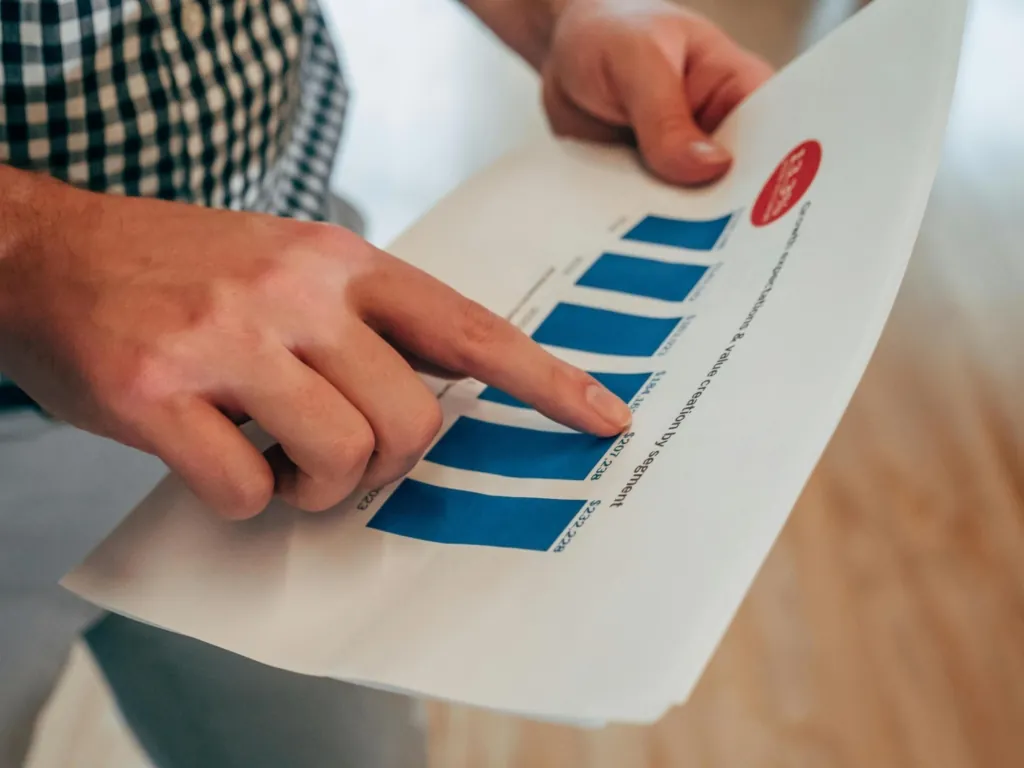يعد الربط الداخلي أحد أقوى الأساليب التي غالبًا ما يتم تجاهلها في تحسين محركات البحث. إن استراتيجية الربط الداخلي المخطط لها جيدًا لا تساعد محركات البحث على فهم بنية موقعك الإلكتروني فحسب، بل تعمل أيضًا على تحسين تجربة المستخدم وتعزيز سلطة الصفحة. في هذا الدليل الشامل، سوف نستكشف في هذا الدليل الشامل خصوصيات وعموميات الربط الداخلي، ونحدد أفضل الممارسات، ونقدم خطوات قابلة للتنفيذ لمساعدتك على إتقان هذا الجانب الحيوي من تحسين محركات البحث.
ما هو الربط الداخلي ولماذا هو مهم؟
الروابط الداخلية هي روابط تشعبية تربط إحدى صفحات موقعك الإلكتروني بأخرى. وعلى عكس الروابط الخارجية، التي تقود المستخدمين إلى نطاقات أخرى، تساعد الروابط الداخلية محركات البحث والزوار على التنقل عبر المحتوى الخاص بك بسلاسة.
تعريف الربط الداخلي
يتضمن الربط الداخلي في جوهره ربط الصفحات ذات الصلة على موقعك. تساعد هذه العملية روبوتات محرك البحث على الزحف إلى موقعك بكفاءة أكبر مع منح المستخدمين مسارًا واضحًا للمحتوى ذي الصلة. توجد الروابط الداخلية عادةً في قوائم التنقل والمحتوى السياقي داخل المقالات والأشرطة الجانبية والتذييلات.
لماذا يعتبر الربط الداخلي أمرًا بالغ الأهمية
الربط الداخلي ضروري لعدة أسباب:
- تحسين قابلية الزحف المحسّنة: تكتشف محركات البحث المحتوى الجديد والمُحدَّث من خلال تتبع الروابط الداخلية.
- فهرسة أفضل: من المرجح أن تتم فهرسة الصفحات التي يتم ربطها بشكل متكرر أكثر.
- تدفق السلطة: يمكن للصفحات عالية الجودة تمرير قيمة الروابط (أو حقوق الملكية) إلى صفحات أخرى، مما يحسن الترتيب العام.
- تجربة المستخدم المحسّنة: يعمل التصفح الواضح والمنطقي على إبقاء الزوار على موقعك لفترة أطول، مما يقلل من معدلات الارتداد ويزيد من وقت المكوث.

فوائد استراتيجية الربط الداخلي القوية
توفر استراتيجية الربط الداخلي التي يتم تنفيذها بعناية العديد من المزايا التي تتجاوز تحسين محركات البحث. وفيما يلي بعض المزايا الرئيسية:
- تحسين تصنيفات محركات البحث المحسّنة: من خلال توزيع حقوق ملكية الروابط عبر صفحاتك، يمكن للرابط الداخلي أن يعزز إمكانات ترتيب الصفحات الأقل موثوقية.
- تنقل المستخدم المحسّن: يجد الزائرون سهولة أكبر في استكشاف الموضوعات ذات الصلة، مما يؤدي إلى تجربة تصفح أكثر جاذبية.
- انخفاض معدلات الارتداد: من خلال توجيه المستخدمين إلى صفحات أخرى ذات صلة، تساعد الروابط الداخلية في إبقاء الزوار على موقعك لفترة أطول.
- علاقات المحتوى الأقوى: يبني الربط الداخلي تسلسلاً هرميًا طبيعيًا، ويوضح لمحركات البحث كيفية ارتباط المحتوى الخاص بك.
فهم آليات الربط الداخلي
لتحقيق أقصى استفادة من الربط الداخلي، من المهم فهم كيفية عمله من منظور تحسين محركات البحث.
كيف تمرر الروابط السلطة
عندما تقوم بالارتباط من صفحة إلى أخرى، يتم نقل جزء من سلطة الصفحة المرتبطة إلى الصفحة المرتبطة. ويُعرف هذا باسم حقوق ملكية الروابط. لا يتم تمرير كل السلطة على طول الصفحة، ولكن وضع الروابط الداخلية بشكل استراتيجي يمكن أن يضمن حصول صفحاتك الأكثر أهمية على التعزيز الذي تحتاجه.
دور نص الارتباط
نص الارتباط هو النص القابل للنقر في الرابط التشعبي. وهو يعطي المستخدمين ومحركات البحث فكرة عن محتوى الصفحة المرتبطة. يعد استخدام نص الارتباط ذي الصلة والوصف أمرًا بالغ الأهمية للربط الداخلي الفعال.
أفضل الممارسات لنص الرابط
- اجعلها ذات صلة بالموضوع: استخدم نص الارتباط الذي يصف الصفحة الوجهة بوضوح.
- امزجها: تجنب استخدام نفس نص الارتباط بشكل متكرر لصفحات مختلفة.
- حافظ على طبيعته: تأكد من أن نص الرابط يتدفق بشكل طبيعي داخل المحتوى الخاص بك.

أفضل الممارسات للربط الداخلي لتحسين محركات البحث SEO
يتطلب تنفيذ استراتيجية قوية للربط الداخلي اتباع أفضل الممارسات التي تتماشى مع كل من إرشادات تحسين محركات البحث وتجربة المستخدم.
استخدام نص رابط وصفي
يجب أن يكون نص الرابط وصفيًا ومرتبطًا بالسياق. وبدلاً من العبارات العامة مثل "انقر هنا"، استخدم كلمات رئيسية أو عبارات تشير بوضوح إلى ما سيجده المستخدم.
نصائح لنص الرابط الفعال
- اجعلها موجزة (يفضل أن تكون خمس كلمات أو أقل)
- استخدام اللغة الطبيعية
- تجنب حشو الكلمات المفتاحية
رابط إلى الصفحات ذات الصلة وذات القيمة العالية
اربط المحتوى الخاص بك بالصفحات التي تضيف قيمة إلى رحلة القارئ. يجب أن تتلقى الصفحات ذات القيمة العالية، مثل المحتوى الركيزة أو المقالات دائمة الخضرة، المزيد من الروابط الداخلية لزيادة إمكانات ترتيبها.
تجنب التداخل
على الرغم من أن الربط الداخلي مفيد، إلا أن المبالغة في الربط الداخلي يمكن أن يربك محركات البحث ويقلل من قيمة الروابط. ركز على الربط فقط عندما يكون الربط منطقيًا ويساهم في تجربة المستخدم.
بناء هيكل ربط داخلي فعال
تقوم بنية الربط الداخلية المنظمة جيدًا على تسلسل هرمي واضح للموقع الإلكتروني. ويتضمن ذلك تخطيط موقعك وتحديد الصفحات الرئيسية وإنشاء تدفق منطقي بينها.
تخطيط هيكلية موقعك الإلكتروني
قبل أن تبدأ في إضافة الروابط الداخلية، من المهم أن ترسم خريطة لبنية موقعك الإلكتروني. من الأساليب الشائعة أن تتخيل موقعك كهرم:
- المستوى الأعلى: الصفحة الرئيسية وصفحات المحور الرئيسي
- المستوى المتوسط: صفحات الفئات والفئات الفرعية
- المستوى السفلي: صفحات المحتوى الفردي
صفحات الركائز ومجموعات المواضيع
تعمل صفحات الركيزة كمصادر شاملة حول مواضيع عامة. وهي تعمل كمحاور ترتبط بمقالات أو مواضيع فرعية أكثر تحديدًا، تُعرف باسم صفحات المجموعة.
العناصر الرئيسية لمجموعة المواضيع الناجحة
- صفحة الركيزة: مقال مطول يغطي موضوعًا واسعًا بعمق
- صفحات المجموعة: مقالات مفصلة تركز على جوانب محددة من الموضوع
- الروابط الداخلية: يجب أن ترتبط كل من صفحات الركيزة والصفحات العنقودية ببعضها البعض لإثبات صلة الموضوع
أدوات وتقنيات للتدقيق في الربط الداخلي
إن مراقبة استراتيجية الربط الداخلي الخاصة بك أمر بالغ الأهمية لضمان فعاليتها. يمكن أن تساعدك العديد من الأدوات في تحديد المشكلات وتحسين بنية الروابط الخاصة بك.
الأدوات الرئيسية لمراجعة الروابط الداخلية
- وحدة تحكم بحث Google Search Console: تحقق من كيفية زحف جوجل إلى موقعك واكتشف المشكلات المحتملة.
- تدقيق موقع سيمروش: تحديد الروابط المعطلة والصفحات اليتيمة والصفحات ذات الروابط الداخلية غير الكافية.
- الضفدع الصارخ أداة زحف قوية لتحليل بنية الروابط الخاصة بموقعك الإلكتروني.
- Yoast SEO: بالنسبة لمستخدمي ووردبريس، يوفر Yoast رؤى حول أداء الروابط الداخلية مباشرةً داخل محرر المحتوى الخاص بك.
كيفية تحديد الروابط المعطلة وإصلاحها
يمكن أن تؤدي الروابط المعطلة إلى تجربة مستخدم ضعيفة وفقدان حقوق ملكية الروابط. استخدم أداة التدقيق المفضلة لديك بانتظام للبحث عن الروابط المعطلة وتحديثها أو إزالتها على الفور.
خطوات إصلاح الروابط المعطلة
- تحديد الروابط المعطلة باستخدام أداة التدقيق.
- قم بتحديث الروابط للإشارة إلى الصفحات المباشرة ذات الصلة.
- إذا لم تعد الصفحة موجودة، ففكر في إعادة التوجيه إلى مورد مشابه.
قياس توزيع أسهم الروابط
يمكن أن يساعدك فهم كيفية تدفق ملكية الروابط عبر موقعك على اتخاذ قرارات مستنيرة بشأن مكان إضافة المزيد من الروابط. استخدم أدوات مثل Semrush لتحليل الصفحات التي تتلقى معظم الروابط الداخلية ومقدار السلطة التي توزعها.
تنفيذ استراتيجية الربط الداخلي: دليل خطوة بخطوة
يمكن أن يؤدي اتباع نهج منظم إلى تبسيط عملية تنفيذ استراتيجية ربط داخلي فعالة. اتبع هذه الخطوات للبدء.
الخطوة 1: مراجعة روابطك الحالية
ابدأ بإجراء تدقيق شامل لبنية الروابط الداخلية الحالية. حدد الصفحات التي تتلقى روابط داخلية قليلة أو معدومة، وكذلك الروابط المعطلة التي تحتاج إلى تحديث.
الخطوة 2: تحديد الصفحات ذات السلطة العليا
حدّد الصفحات على موقعك التي تحتوي على أكبر عدد من الروابط الخلفية الخارجية وذات المرجعية العالية. هذه الصفحات مثالية لتمرير الروابط إلى الصفحات الأقل موثوقية.
الخطوة 3: إنشاء مجموعات المحتوى
نظّم المحتوى الخاص بك في مجموعات تتمحور حول صفحات الركائز. يجب أن ترتبط كل صفحة ركيزة بالعديد من المقالات ذات الصلة، ويجب أن ترتبط كل مقالة ذات صلة بصفحة الركيزة.
الخطوة 4: تنفيذ الروابط السياقية والملاحية
أضف الروابط السياقية داخل المحتوى الخاص بك حيثما كانت مناسبة بشكل طبيعي. تأكد أيضًا من تضمين قوائم التنقل الخاصة بك روابط لأهم صفحاتك.
الخطوة 5: المراقبة والتحديث بانتظام
الربط الداخلي ليس مهمة لمرة واحدة. عند إضافة محتوى جديد، قم بإعادة النظر في مقالاتك القديمة لدمج روابط داخلية جديدة. المراجعات المنتظمة هي المفتاح للحفاظ على بنية روابط صحية.
الأخطاء الشائعة وكيفية تجنبها
حتى أكثر استراتيجيات الربط الداخلي حسن النية يمكن أن تتعثر إذا لم يتم تجنب الأخطاء الشائعة. وفيما يلي بعض المزالق وكيفية الابتعاد عنها.
الإفراط في استخدام نص رابط متطابق
قد يؤدي استخدام نفس نص الارتباط بشكل متكرر لصفحات مختلفة إلى إرباك محركات البحث. يجب أن يستخدم كل رابط نص ارتباط وصفي وفريد للإشارة بوضوح إلى محتوى الصفحة الوجهة.
الارتباط بمحتوى غير ذي صلة
احرص على أن يكون كل رابط داخلي وثيق الصلة بالمحتوى المحيط. لا تضر الروابط غير ذات الصلة بتجربة المستخدم فحسب، بل قد تقلل أيضًا من القيمة الإجمالية لجهود تحسين محركات البحث.
الصفحات المعطلة أو اليتيمة
غالبًا ما تغفل محركات البحث عن الصفحات اليتيمة أو الصفحات التي لا تشير إليها روابط داخلية. يمكن أن تساعدك عمليات التدقيق المنتظمة في تحديد هذه المشكلات ومعالجتها.
تتبع وقياس تأثير استراتيجية الربط الداخلي وقياسها
يجب مراقبة استراتيجية الربط الداخلي الفعالة وتعديلها باستمرار بناءً على بيانات الأداء الحقيقية. من خلال تتبع المقاييس الرئيسية، يمكنك تقييم كيفية تأثير الروابط الداخلية على سلوك المستخدم وتصنيفات محرك البحث، ثم تحسين استراتيجيتك وفقًا لذلك.
مؤشرات الأداء الرئيسية (KPIs)
ركز على هذه المقاييس لتقييم جهود الربط الداخلي الخاصة بك:
- معدل الارتداد: راقب ما إذا كان الزوار يبقون لفترة أطول على موقعك بعد النقر على الروابط الداخلية. قد يشير الانخفاض في معدل الارتداد إلى أن المستخدمين يجدون أن المحتوى المرتبط ذو صلة.
- متوسط الوقت على الصفحة: تشير زيادة الوقت على الصفحة إلى أن الروابط الداخلية ترشد المستخدمين بنجاح إلى محتوى إضافي قيّم.
- عدد مرات مشاهدة الصفحة لكل جلسة: يمكن أن يشير عدد أكبر من الصفحات في كل جلسة عمل إلى وجود روابط داخلية فعالة، حيث يستكشف المستخدمون صفحات متعددة خلال زيارة واحدة.
- حركة المرور العضوية والتصنيفات: تحقق مما إذا كانت الصفحات التي تحتوي على روابط داخلية محسّنة تشهد تحسينات في حركة البحث العضوية وتصنيفات محركات البحث.
- معدلات التحويل: تتبع التأثير على التحويلات من خلال قياس ما إذا كان المستخدمون يكملون الإجراءات المطلوبة، مثل الاشتراك في النشرات الإخبارية أو تنزيل الموارد أو إجراء عمليات الشراء بعد اتباع الروابط الداخلية.
أدوات للرصد والتحليل
يمكن أن تساعدك العديد من الأدوات في جمع هذه المقاييس وتحليلها:
- تحليلات جوجل: استخدم تقارير تدفق السلوكيات لمعرفة كيفية تنقل المستخدمين بين الصفحات وقياس مقاييس التفاعل مثل معدل الارتداد ومتوسط الوقت على الصفحة.
- وحدة تحكم بحث Google Search Console: تتبع تحسينات الفهرسة والترتيب. يمكن أن يساعد تقرير التغطية في تحديد ما إذا كانت الروابط الداخلية تساعد في اكتشاف صفحات جديدة.
- سمروش أو الضفدع الصارخ: يمكن أن توفر هذه الأدوات رؤى حول بنية الروابط الداخلية الخاصة بك، مثل عدد الروابط الداخلية لكل صفحة وتوزيع أسهم الروابط.
تعديل استراتيجيتك
سيسمح لك التحليل المنتظم لمؤشرات الأداء الرئيسية هذه بتحديد المجالات التي يمكن فيها تحسين استراتيجية الربط الداخلي الخاصة بك. على سبيل المثال:
- إذا لاحظت أن بعض الصفحات ذات الصلاحية العالية لا تمرر ما يكفي من الروابط إلى صفحات أخرى، ففكر في زيادة الروابط السياقية لتوزيع الصلاحية بشكل متساوٍ.
- إذا كان المستخدمون لا يتفاعلون مع المحتوى المرتبط، فقم بمراجعة الموضع والنص الرابط للتأكد من أن الروابط مرئية وذات صلة.
- قم بإجراء عمليات تدقيق دورية للعثور على الروابط المعطلة أو الصفحات اليتيمة وإصلاحها، مما يضمن بقاء جميع المحتويات القيّمة متاحة للمستخدمين ومحركات البحث على حد سواء.
من خلال دمج ممارسات التتبع هذه في روتين تحسين محركات البحث لديك، يمكنك اتخاذ قرارات مستندة إلى البيانات التي تعزز استراتيجية الربط الداخلي لديك وتساهم في تحسين أداء الموقع بشكل عام.
الاستفادة من الروابط الداخلية لتحديث المحتوى وإعادة توجيهه
المحتوى ليس ثابتًا، ولا ينبغي أن تكون استراتيجية الربط الداخلي الخاصة بك كذلك. أحد الأساليب الفعّالة التي غالبًا ما يتم تجاهلها هو استخدام الروابط الداخلية كأداة لتحديث المحتوى الحالي وإعادة استخدامه. من خلال إعادة النظر في المنشورات القديمة ودمج الروابط الداخلية المحدّثة، يمكنك تعزيز قيمة تحسين محركات البحث وضمان بقائها ملائمة لكل من المستخدمين ومحركات البحث.
الاستراتيجيات الرئيسية لتحديث المحتوى
- التدقيق والتحديث: راجع المحتوى القديم بانتظام لتحديد الروابط القديمة أو المعطلة. استبدل هذه الروابط بروابط لمواد جديدة ذات صلة.
- دمج المحتوى الدائم الخضرة: قم بتعزيز بنية موقعك من خلال ربط المنشورات القديمة بصفحات الأعمدة دائمة الخضرة التي تقدم قيمة باستمرار.
- بناء مجموعات المواضيع: قم بتجميع المنشورات ذات الصلة في مجموعات متماسكة. من خلال ربط هذه المنشورات ببعضها البعض وبمصادر جديدة وشاملة، فإنك تنشئ تسلسلاً هرميًا طبيعيًا يعزز السلطة الموضعية.
فوائد استراتيجية تحديث المحتوى
لا تؤدي الاستفادة من الروابط الداخلية في جهود تحديث المحتوى إلى تحسين تحسين مُحسّنات محرّكات البحث لموقعك فحسب، بل تعزز أيضًا من تفاعل المستخدم. توجه الروابط المحدّثة القراء إلى أحدث المعلومات وأكثرها صلة، مما يقلل من معدلات الارتداد ويزيد من مدة الجلسة. تساعد هذه العملية المستمرة لإعادة تخصيص المحتوى الخاص بك وربطه ببعضه البعض في الحفاظ على موقع إلكتروني ديناميكي وسهل الاستخدام يتكيف مع الاتجاهات المتغيرة ويحافظ على عودة جمهورك للحصول على المزيد.
تأثير الربط الداخلي على تجربة المستخدم
لا يقتصر الربط الداخلي على تحسين محركات البحث فحسب، بل يؤثر أيضًا بشكل كبير على كيفية تفاعل المستخدمين مع موقعك. تسهّل بنية الروابط الداخلية المدروسة على الزائرين العثور على المحتوى ذي الصلة وتعزز التصفح العام.
استخدام الروابط الداخلية لتوجيه المستخدمين
يمكن أن تكون الروابط الداخلية بمثابة علامات إرشادية توجه المستخدمين إلى محتوى إضافي قيّم. على سبيل المثال، يمكن أن يقود رابط في مكان جيد داخل مقال ما القراء إلى دليل مفصّل حول موضوع ذي صلة، مما يبقيهم متفاعلين لفترة أطول.
الفوائد التي تعود على المستخدمين
- سهولة التنقل بسهولة: تساعد الروابط المميزة بوضوح المستخدمين على استكشاف موقعك دون عناء.
- زيادة المشاركة: يشجع الارتباط بالمحتوى ذي الصلة الزوار على متابعة القراءة.
- وصول أسرع إلى المعلومات: تقلل الروابط الداخلية جيدة التنظيم من عدد النقرات المطلوبة للعثور على المحتوى ذي الصلة.
كيف يقلل الارتباط الداخلي من معدلات الارتداد
يُعد معدل الارتداد المنخفض إشارة إيجابية لمحركات البحث. من خلال تقديم مسارات متعددة للمستخدمين لمواصلة استكشاف موقعك، فإنك تشجعهم على البقاء لفترة أطول، مما قد يؤدي في النهاية إلى ارتفاع معدلات التحويل.
دراسات حالة وأمثلة من العالم الحقيقي
يمكن أن توفر رؤية استراتيجيات الربط الداخلي أثناء العمل رؤى عملية حول كيفية تنفيذ هذه التكتيكات بفعالية.
مثال على استراتيجية الربط الداخلي الناجحة
ضع في اعتبارك موقعًا إلكترونيًا يركز على التسويق الرقمي. من خلال تنظيم المحتوى في مجموعات مواضيع واضحة مع صفحة ركيزة شاملة عن تحسين محركات البحث، تمكن الموقع من:
- زيادة حركة المرور العضوية بشكل كبير
- تقليل معدلات الارتداد عن طريق توفير مسار منطقي للمحتوى
- تحسين المشاركة الإجمالية للمستخدم ومدة الجلسة
العناصر الرئيسية للنجاح
- صفحات الأعمدة المحددة بوضوح والمواد الداعمة
- الاستخدام المتسق لنص الارتباط الوصفي
- عمليات تدقيق منتظمة للحفاظ على بنية ارتباط سليمة
قصص نجاح إضافية
- قام موقع للتجارة الإلكترونية بتحسين تصنيفات صفحات المنتجات من خلال ربط منشورات المدونة ذات السلطة العالية بصفحات المنتجات.
- شهدت مدونة تقنية زيادة وقت المكوث وانخفاض معدلات الارتداد من خلال تنفيذ استراتيجية ربط داخلية قوية عبر جميع المقالات.

نهج شركتنا في الربط الداخلي لتحسين محركات البحث SEO
نحن نفخر بعملنا كوكالة تسويق رقمي للشركات التي يقودها المؤسسون. يعمل فريقنا المكون من متخصصين في تحسين محركات البحث وكُتَّاب المحتوى والخبراء التقنيين معاً لبناء استراتيجيات مصممة خصيصاً لمساعدة عملائنا على التوسع دون أن يكلفهم ذلك الكثير.
نحن نؤمن بأن الربط الداخلي هو حجر الزاوية في أي استراتيجية ناجحة لتحسين محركات البحث. فمن خلال التعامل مع الروابط الداخلية كامتداد لجهودك التسويقية الشاملة، نضمن أن تعمل كل صفحة على موقعك الإلكتروني معًا لتعزيز التصنيفات العضوية وزيادة جودة الزيارات. نهجنا بسيط وفعال في نفس الوقت: نقوم بتحليل المحتوى الموجود لديك، وتحديد الصفحات ذات القيمة العالية، وإنشاء بنية روابط داخلية قوية تدعم تصفح المستخدم وتحسين محرك البحث.
العمل مع نوبتيما يعني أنك تستفيد من فريق متخصص يتعامل مع عملك كامتداد لأعمالنا. نحن نركز على تقديم نتائج قابلة للقياس، واستراتيجياتنا المصممة خصيصاً لمساعدتك على تحقيق أعلى المراتب على جوجل مع تحقيق المزيد من المبيعات العضوية. لقد ساعد تواصلنا الشفاف ورؤيتنا الاستراتيجية العديد من الشركات على تحقيق نمو استثنائي، ونحن مستعدون لمساعدتك على تحقيق نفس الشيء.
الاتجاهات المستقبلية في الربط الداخلي
مع استمرار تطور خوارزميات محركات البحث، تزداد أهمية استراتيجية الربط الداخلي القوية. يمكن أن يساعدك البقاء في صدارة هذه التغييرات في الحفاظ على ميزة تنافسية في المشهد الرقمي.
الاستعداد لتغييرات تحسين محركات البحث المستقبلية
تركز محركات البحث بشكل متزايد على تجربة المستخدم وأهمية المحتوى. وهذا يعني أن الروابط الداخلية، التي تعمل على توجيه المستخدمين وتوفير السياق لمحركات البحث، سوف تزداد أهميتها.
توقع تحديثات الخوارزمية المتوقعة
- فهرسة الجوّال أولاً: تأكد من إمكانية الوصول إلى روابطك الداخلية على الأجهزة المحمولة.
- إشارات سلوك المستخدم: راقب تفاعل المستخدمين لتحسين استراتيجية الربط الخاصة بك.
- ملاءمة المحتوى: قم بتحديث المحتوى الخاص بك بانتظام للحفاظ على ملاءمته ومرجعيته.
الابتكارات في أدوات الربط الداخلي
مع التقدم في مجال الذكاء الاصطناعي، يمكننا أن نتوقع أدوات أكثر ذكاءً تقترح الروابط الداخلية المثلى تلقائيًا بناءً على صلة المحتوى وسلوك المستخدم. يمكن أن يساعدك البقاء على اطلاع على هذه الاتجاهات في الاستفادة من التكنولوجيا لتحسين استراتيجية الربط الداخلي بشكل أكبر.
الخاتمة
إن الربط الداخلي هو حجر الزاوية في تحسين محركات البحث الفعال الذي لا يعزز تصنيفات محرك البحث من خلال توزيع أسهم الروابط فحسب، بل يعزز أيضًا تجربة المستخدم من خلال إنشاء بنية واضحة وقابلة للتنقل في الموقع الإلكتروني. من خلال استخدام نص رابط وصفي وطبيعي، وتنظيم المحتوى بتسلسل هرمي واضح للصفحات والمجموعات الأساسية ومراجعة الروابط بانتظام، فإنك تضع الأساس للنمو العضوي المستدام. تضمن هذه الممارسات أن يتمكن كل من محركات البحث والزوار من اكتشاف المحتوى الخاص بك والتفاعل معه بسهولة.
يُعد تنفيذ استراتيجية ربط داخلية قوية عملية مستمرة تتطلب الانتباه إلى الاتجاهات المتطورة والتحسين المستمر. سواء كنت قد بدأت للتو أو تتطلع إلى تحسين الإعداد الحالي، فإن اعتماد أفضل الممارسات هذه سيساعدك على تحقيق تحسينات دائمة في أداء الموقع. إذا كنت بحاجة إلى إرشادات الخبراء، فلا تتردد في التواصل معنا وحجز مكالمة استراتيجية معنا في Nuoptima. نحن ملتزمون بمساعدة الشركات التي يقودها المؤسسون على التوسع من خلال استراتيجيات تسويق مصممة خصيصاً وفعالة من حيث التكلفة تحقق نتائج كبيرة دون أن تكلفك الكثير.
الأسئلة الشائعة
يتضمن الربط الداخلي ربط صفحة من موقعك الإلكتروني بأخرى. فهو يساعد محركات البحث على الزحف إلى موقعك وفهرسته بشكل أكثر فعالية، ويوزع أسهم الروابط بين الصفحات، ويحسن تنقل المستخدم من خلال توفير مسارات واضحة للمحتوى ذي الصلة.
لتعزيز الترتيبات، استخدم نص رابط وصفي وطبيعي، وقم بالارتباط بصفحات ذات قيمة عالية، وحافظ على تسلسل هرمي واضح للموقع مع صفحات الركائز ومجموعات المواضيع. المراجعات والتحديثات المنتظمة ضرورية أيضًا للحفاظ على بنية الروابط الخاصة بك سليمة وفعالة.
يجب أن يكون نص الارتباط الفعال وثيق الصلة وموجزًا (من الناحية المثالية خمس كلمات أو أقل)، ومتنوعًا لتجنب حشو الكلمات الرئيسية. يجب أن يصف محتوى الصفحة المرتبطة بشكل طبيعي، لتوجيه كل من المستخدمين ومحركات البحث بدقة.
استخدم أدوات مثل Google Search Console أو Semrush أو Screaming Frog لتحديد الروابط المعطلة والصفحات اليتيمة والتوزيع غير المتكافئ للروابط. بمجرد تحديدها، قم بتحديث الروابط المعطلة أو استبدالها وإضافة روابط داخلية إلى الصفحات اليتيمة لضمان إمكانية الوصول إلى جميع المحتويات.
تتبّع مؤشرات الأداء الرئيسية مثل معدل الارتداد، ومتوسط الوقت على الصفحة، والصفحات لكل جلسة، وعدد الزيارات العضوية، ومعدلات التحويل. يمكن لأدوات مثل Google Analytics و Google Search Console مساعدتك في مراقبة هذه المقاييس وتعديل استراتيجيتك بناءً على البيانات.



